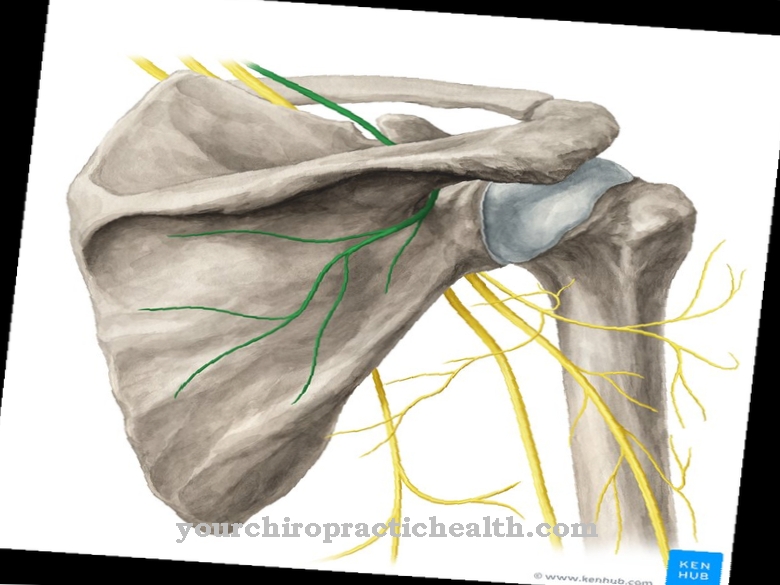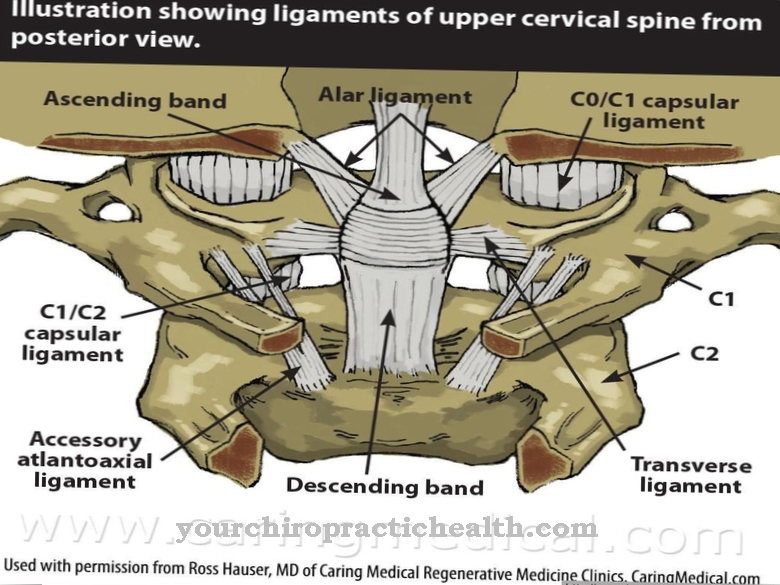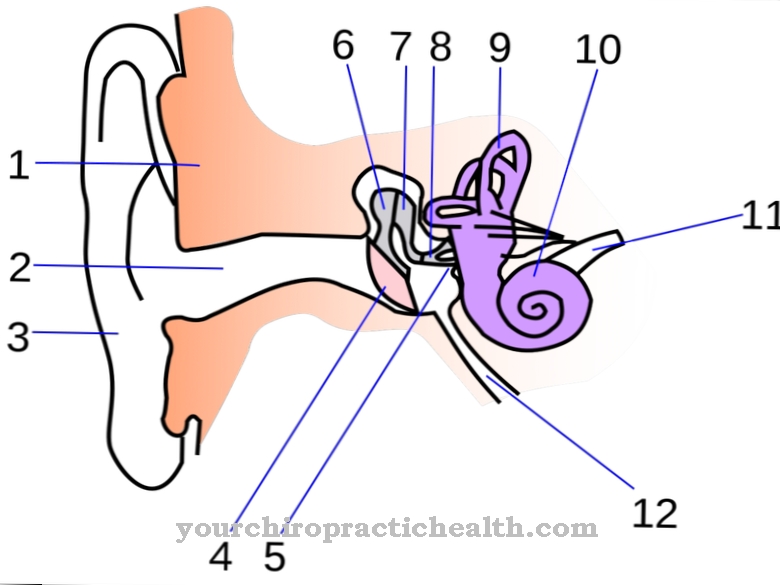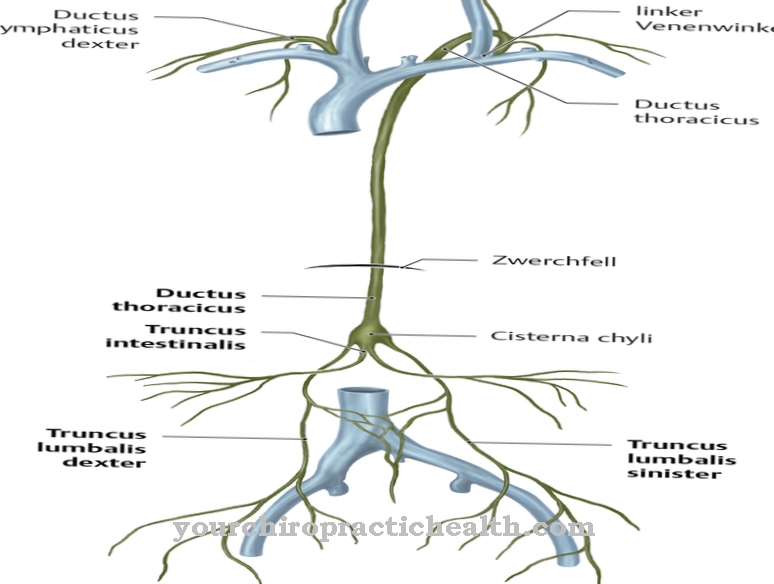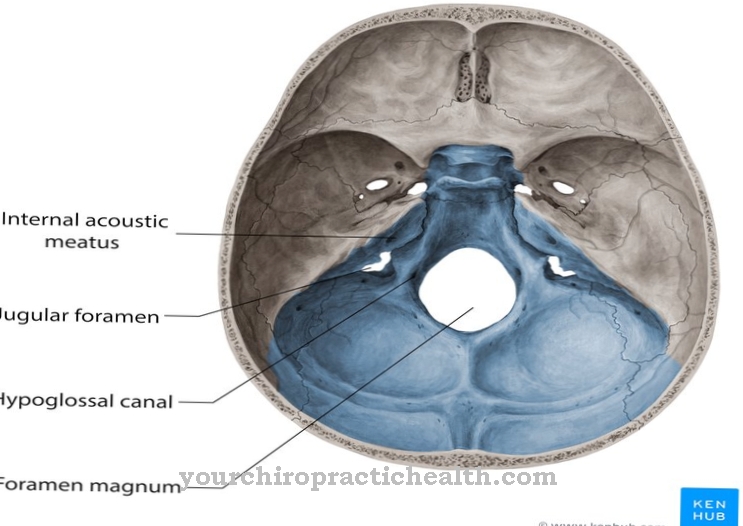The Glottis (glottis, Rima glottidis) is the variable space between the vocal cords (vocal cords), with which phonation (voice formation) is made possible. The ancient Greek word glottis means mouthpiece of a tube in German. A glottis is composed of the pars intermembranacea and the pars intercartilaginea.
The pars intermembranacea is the section between the vocal cords. This makes up about 60 percent of the length of a glottis. The pars intermembranacea is open during voiced speech, but closed during unvoiced whispering. The pars intercartilaginea is located between the two processus vocales of the adjusting cartilage. This area is closed during phonation and is open during whispering. In this way, the contraction of the cricoarytaenoideus lateralis muscle forms the so-called whisper triangle.
What is the glottis?
The width and length of the glottis are therefore the decisive parameters for voice formation, speech sounds and phonation types. They are influenced by the position of the cartilage. These can be brought together as well as apart.
The width of the glottis changes accordingly from a narrow gap to a wide triangle. In addition, the adjusting cartilages perform various rotational movements, which also regulate the width of the glottis and the degree of tension in the vocal folds. The widening and narrowing of the glottis repeat themselves cyclically. Eventually, as the airflow increases, the vocal folds gradually open and let it through. If the air pressure drops again, the vocal folds regain their original shape and also resume their previous position. This vibration of the vocal folds is known as the Bernoulli effect. That in the 18th century a.o. Law developed by Daniel Bernoulli states that the faster the air flows, the lower the pressure.
Anatomy & structure
The vocal folds and glottis are important parts of the larynx. It lies on the outside of the throat and forms the transition to the windpipe. In addition to vocal training, the larynx ensures that no food gets into the windpipe.
The voice is formed when the glottis makes exhaled air vibrate. The frequency of the air vibrations is decisive for the pitch. For example, if an opera singer sings an extremely high pitched note, the vocal folds open and close up to 1,000 times per second. The voice gets its volume with the help of resonance chambers in the lungs and the paranasal sinuses. The so-called chest voice (chest resonance) arises in this context when the lungs predominantly provide the resonance space. In this case the voice is comparatively solitary and dark. The head voice, on the other hand, owes its light and higher tone mainly to the resonance in the paranasal sinuses.
Function & tasks
The mutual positioning of the two vocal folds to one another is made possible by the connection of their rear ends with the adjusting cartilages. The so-called pocket folds lie above the vocal cords. Under irregular conditions, the pocket folds are involved in voice formation, which is why they are also called "false vocal cords".
In such a case the voice sounds brittle and artificially pressed (“pocket folds voice”). The voice can be interrupted by briefly closing the glottis. This results in a typical crack. Something similar happens through a spontaneous closure of the larynx. Wrong development of the glottis and the vocal cords can be examined relatively easily with a laryngoscope (larynx mirror). A stroboscope that emits flashes of light can make the vibration behavior of the vocal folds visible. Finally, the vibrations of the vocal cords can be recorded very well with a laryngograph.
You can find your medication here
➔ Medicines for hoarsenessDiseases
A common disease of the voice-forming apparatus is paralysis of the vocal folds. It often occurs on one side, but if it occurs on both sides, it can lead to serious breathing difficulties.
The vocal cords can no longer move apart as necessary. The result is a considerable disruption of the air flows. Under certain circumstances, this dangerous incident can only be resolved surgically. The cause of vocal cord paralysis is often damage to the recurrent nerve (inferior laryngeal nerve). For example, it may have been preceded by a thyroid operation in which this nerve was injured or even cut. Lung cancer or other malignant tumors in the neck and chest area also threaten to seriously affect this nerve.
The paralysis can also have inflammatory causes. A bilateral paralysis of the vocal folds leads to shortness of breath even at rest. The voice is often only slightly changed, sounds a bit weak and brittle. However, when you breathe in, a rattling, wheezing sound is heard. Every small illness in the area of the airways increases the breathing difficulties immediately and very clearly. In contrast to this, unilateral vocal cord paralysis usually only manifests itself as a slight hoarseness, which, however, also leads to breathing problems with greater physical exertion.
Targeted vocal cord training can contribute relatively effectively to improving the condition of one-sided paralysis. In mild cases, the unilateral vocal cord paralysis disappears on its own. If an operation is necessary to cure bilateral vocal cord paralysis, a common procedure is to pull one of the two vocal folds outwards (laterofixation). In this way the required distance between the two vocal cords can be restored. Removing one of the two vocal cords also works. This procedure must always be performed under general anesthesia. Using modern equipment, this operation can also be performed from the inside through the mouth, but this only insignificantly reduces the risk of complications.

